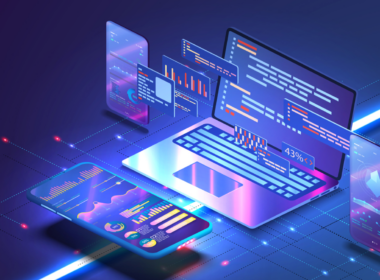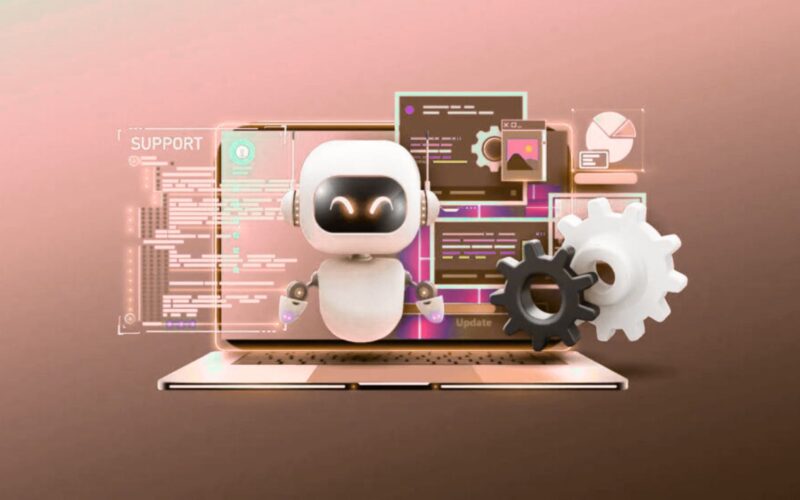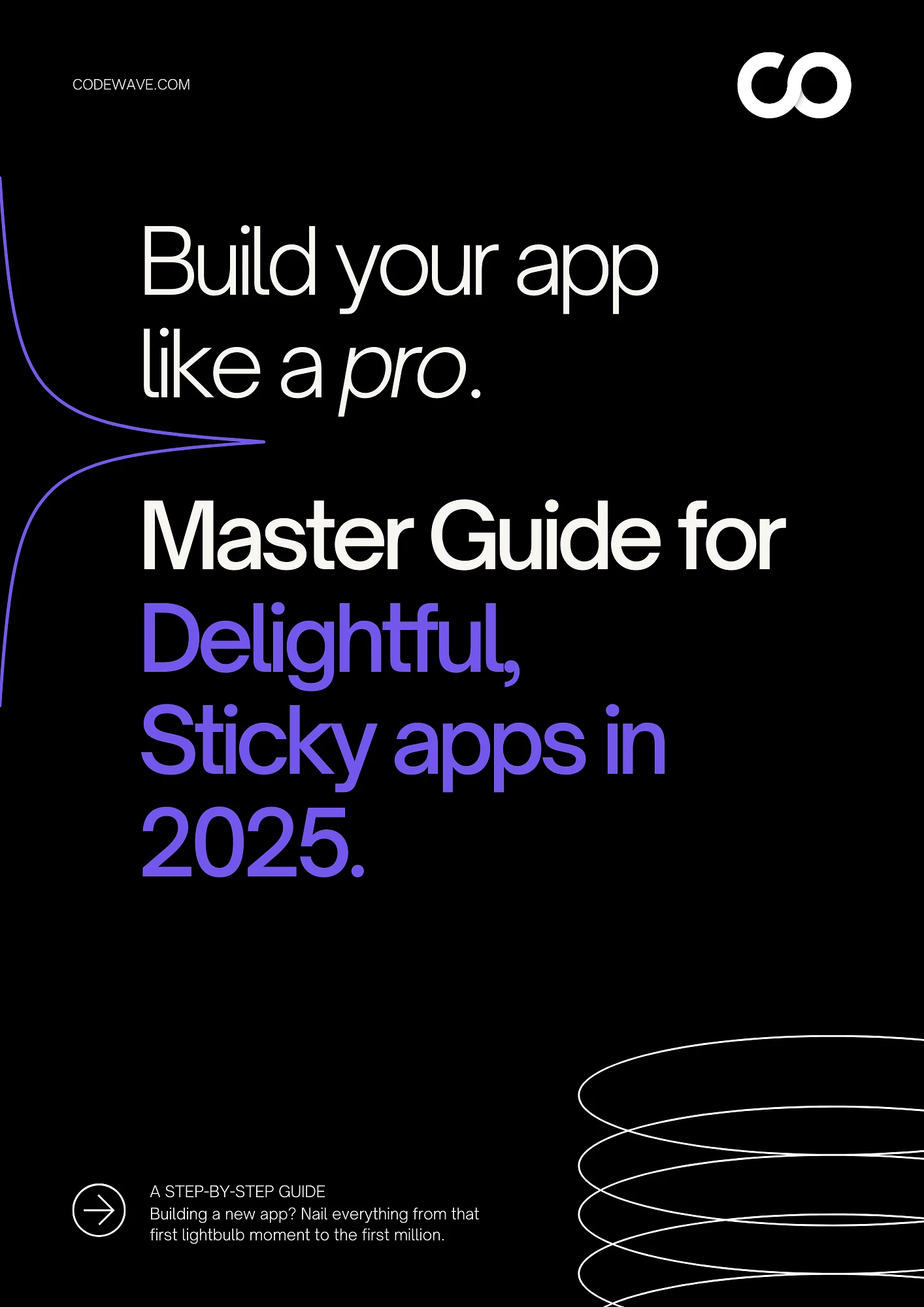Do you need AI that creates or AI that executes? The answer can shape your entire automation strategy. Businesses everywhere currently use generative AI to write content, analyze patterns, or produce creative assets. That technology has become standard practice.
McKinsey’s 2025 report indicates that 88% of companies now regularly use AI across at least one business function, up from 78% a year ago. This growing adoption masks an important split emerging in AI capabilities.
Agentic AI goes beyond generating outputs. It completes workflows, interacts with other systems, and makes decisions within boundaries you define. One type of AI gives you the materials. The other builds the house.
This article walks you through both approaches and helps you understand which makes sense for different business challenges.
Key Takeaways:
- Agentic AI automates predefined tasks with predictable outcomes, while generative AI creates new content from existing data, each suited for different business needs and challenges.
- Agentic AI typically requires higher upfront costs due to complex integration, while generative AI offers a quicker, more affordable solution with faster deployment and lower initial investment.
- Data security is paramount when implementing AI. A recent breach of McDonald’s AI system exposed sensitive job-seeker data, underscoring the need for robust protection measures.
- Agentic AI scales efficiently for repetitive, structured tasks, while generative AI adapts easily to creative and dynamic content generation, providing flexibility as business needs grow.
Agentic AI vs Generative AI: A Side-by-Side Comparison
If you’re here for a quick overview, you’re in the right place. In the table below, we’ve laid out the key differences between agentic AI and generative AI to help you understand how each can benefit your business.
| Feature | Agentic AI | Generative AI |
|---|---|---|
| Purpose | Automates specific tasks based on predefined rules | Creates new content, solutions, or ideas from existing data |
| Data Requirements | Works with structured, predefined data | Requires large, diverse datasets for training |
| Output | Predictable, rule-based results | Unpredictable, creative content |
| Use Cases | Customer support, resource management, process automation | Content generation, predictive analysis, innovation |
| Flexibility | Limited to specific tasks and workflows | Highly flexible, capable of adapting to new challenges |
| Speed | Fast execution in specific tasks | May require more time for content generation |
| Complexity | Simpler and more structured | Complex, with continuous learning and adaptation |
For those who want to dig deeper into the strengths and applications of each AI type, feel free to continue reading the sections below.
What Is Agentic AI?
Agentic AI refers to artificial intelligence that is designed to perform specific tasks or make decisions based on predefined rules or algorithms. It acts on clear inputs, providing predictable outputs with little variation. For example, an AI-powered chatbot responding to customer queries based on a set of FAQs is an example of agentic AI in action.
Agentic AI is expected to dominate IT budget expansion in the coming years, with its share of global IT spending set to exceed 26%, reaching $1.3 trillion by 2029. This highlights the growing importance and investment in automation across industries.
How Agentic AI Works
Agentic AI operates through a cycle of perception, decision-making, and action. Here’s how it functions in practice:
- Goal Setting: You define objectives and boundaries for the AI to operate within
- Environment Perception: The AI continuously monitors relevant data sources and system states
- Decision Making: It evaluates options based on predefined rules, learned patterns, and current context
- Action Execution: The AI carries out tasks across connected platforms and tools
- Learning Loop: It refines its approach based on outcomes and feedback
- Multi-Step Planning: The AI breaks complex goals into sequential actions and adapts when obstacles appear
Applications of Agentic AI Across Different Industries
Agentic AI is reshaping operations across sectors by handling tasks that traditionally required constant human oversight. Here’s where it’s making the biggest impact:
| Industry | Application |
|---|---|
| Fintech | Automatically executes trades based on market conditions, processes loan applications end-to-end, detects and blocks fraudulent transactions in real time, and rebalances investment portfolios according to client risk profiles. |
| Education | Personalizes learning paths by adjusting difficulty and content type, schedules tutoring sessions based on student performance patterns, automates administrative tasks like enrollment and grading, and identifies students needing intervention before they fall behind |
| Healthcare | Manages appointment scheduling across multiple providers and specialties, monitors patient vitals and alerts medical staff to concerning changes, coordinates medication refills and pharmacy communications, and handles insurance pre-authorizations and claims processing |
| Marketing | Automates customer segmentation, personalizes campaign timing, analyzes campaign performance, and optimizes marketing strategies based on data-driven insights. |
| Transportation | Routes delivery vehicles dynamically based on traffic and priority changes, manages fleet maintenance scheduling and parts ordering, coordinates driver assignments and shift coverage, and handles customer communication about delays or updates |
| Retail | Adjusts pricing in response to demand, inventory, and competitor moves, manages stock replenishment across locations, personalizes product recommendations and marketing timing, and handles return processing and customer service inquiries |
| Travel | Rebooks flights and hotels when disruptions occur, manages loyalty program rewards and upgrades, coordinates complex multi-leg itineraries across providers, and handles refund processing and travel insurance claims |
| Insurance | Processes routine claims from submission to payout, assesses risk profiles and adjusts policy pricing, manages policy renewals and payment collections, and coordinates with third parties like repair shops and medical providers |
Advantages and Limitations of Agentic AI
Agentic AI brings powerful capabilities but also comes with constraints that you need to understand before deployment. Here’s the complete picture:
| Advantages | Limitations |
|---|---|
| Continuous Operation: Works 24/7 without breaks, handling tasks across time zones and business hours | High Implementation Complexity: Requires extensive integration with existing systems and careful boundary setting |
| Instant Scaling: Manages thousands of simultaneous tasks without additional resources or slowdown | Significant Upfront Investment: Demands substantial development, testing, and infrastructure costs before going live |
| Consistent Execution: Follows protocols exactly every time without variation from fatigue or distraction | Risk of Cascading Errors: Mistakes can propagate quickly across systems before human oversight catches them |
| Reduced Human Workload: Handles repetitive operational tasks, freeing teams for strategic work | Limited Contextual Judgment: Struggles with nuanced situations requiring empathy, ethics, or cultural understanding |
| Faster Decision Cycles: Processes information and acts immediately without approval delays | Dependency on Data Quality: Performance degrades significantly when working with incomplete or inaccurate information |
| Multi-System Coordination: Seamlessly works across different platforms and tools simultaneously | Change Management Challenges: Teams may resist automation that changes their roles or decision-making authority |
Real-World Examples: Agentic AI in Action
Theory only gets you so far. Let’s look at how organizations are actually deploying agentic AI and what results they’re seeing in measurable terms.
Case Study: Healthcare Documentation at Mass General Brigham and Emory Healthcare
Mass General Brigham implemented ambient documentation technology that automatically captures and processes clinical conversations during patient visits. Within 84 days, physician burnout dropped by 21.2 percentage points.
Emory Healthcare deployed similar systems and saw documentation-related well-being among clinicians improve by 30.7 percentage points after just 60 days.
The AI listens to patient interactions, generates clinical notes, and updates electronic health records without physician input.
Impact Analysis:
| KPI | Result | Business Impact |
|---|---|---|
| Physician Burnout Reduction | 21.2% decrease at Mass General Brigham in 84 days | Lower turnover costs, improved care quality, reduced recruitment needs |
| Clinician Wellbeing | 30.7% improvement at Emory Healthcare in 60 days | Better patient outcomes, increased staff retention, fewer medical errors |
| Documentation Time | Eliminated manual note-taking during and after visits | Physicians see more patients or spend more time on complex cases |
| Administrative Burden | Reduced by handling routine documentation automatically | Staff focus shifts to patient care rather than paperwork |
| Implementation Speed | Measurable improvements within 60-84 days | Fast ROI with minimal disruption to existing workflows |
Are you tired of spending time on repetitive tasks that don’t add much value to your business? At Codewave, we help you implement agentic AI solutions that take care of these tasks, so you can focus on what truly matters.
We work alongside you to automate the mundane, making your operations smoother and freeing up time for more strategic work.
Let’s chat about how agentic AI can help you save time and improve efficiency.
What Is Generative AI?
Generative AI creates new content based on patterns learned from existing data. It produces text, images, code, audio, and video in response to your prompts.
This AI doesn’t take action on your behalf. Instead, it generates outputs you can use, edit, or discard. When you ask ChatGPT to write a marketing email or use DALL-E to create product images, you’re working with generative AI.
It gives you the raw materials, but you decide what happens next.
Overall, J.P. Morgan research projects that generative AI could increase global GDP by as much as $7–10 trillion, accounting for a potential 10% boost to the global economy. This makes it a powerful tool for driving innovation and growth across sectors.
How Generative AI Works
Generative AI learns patterns from massive datasets and uses them to create new content. Here’s the process:
- Training on Data: The AI studies millions of examples to understand patterns, styles, and structures
- Prompt Interpretation: It analyzes your request to understand what you want created
- Pattern Matching: The AI identifies relevant patterns from its training that fit your needs
- Content Generation: It produces new content by combining and adapting learned patterns
- Refinement: The system can iterate on outputs based on your feedback and additional prompts
- Quality Control: Built-in filters check outputs against safety guidelines and coherence standards
Applications of Generative AI Across Different Industries
Generative AI accelerates creative and analytical work by producing content that previously required significant human time. Here’s how different sectors use it:
| Industry | Application |
|---|---|
| Fintech | Generates financial reports and executive summaries, creates personalized investment advice content, produces compliance documentation and regulatory filings, and drafts customer communication for different segments and scenarios |
| Education | Creates customized lesson plans and study materials for different learning levels, generates practice problems and quiz questions automatically, produces explanatory content in multiple formats and languages, and writes feedback comments on student assignments |
| Healthcare | Drafts patient education materials tailored to specific conditions and reading levels, generates clinical documentation and discharge summaries, creates training content for medical procedures and protocols, and produces research literature summaries for practitioners |
| Agriculture | Generates crop management recommendations based on conditions, creates farm reports and yield forecasts, produces maintenance guides for equipment, and drafts grant applications and regulatory compliance documents |
| Transportation | Creates route optimization reports and logistics planning documents, generates driver training materials and safety protocols, produces customer service response templates, and drafts incident reports and insurance documentation |
| Retail | Generates product descriptions for thousands of items automatically, creates marketing copy for different channels and audiences, produces personalized email campaigns and social media content, and drafts customer service responses and FAQ content |
| Travel | Creates destination guides and itinerary suggestions, generates booking confirmation emails and travel tips, produces marketing content for different traveler segments, and drafts review responses and customer communications |
| Insurance | Generates policy documentation and coverage explanations, creates claims correspondence and status updates, produces risk assessment reports and underwriting summaries, and drafts training materials for agents and adjusters |
Advantages and Limitations of Generative AI
Generative AI transforms content creation but has clear boundaries around what it can deliver. Here’s what you gain and what you should watch for:
| Advantages | Limitations |
|---|---|
| Rapid Content Creation: Produces drafts, designs, and code in seconds instead of hours or days | Accuracy Issues: Can generate plausible-sounding but factually incorrect information without warning |
| Cost Efficiency: Reduces content production costs dramatically compared to hiring specialists for every task | Lack of Originality: Recombines existing patterns rather than creating truly novel ideas or approaches |
| Accessibility: Makes professional-quality content creation available to people without specialized skills | Copyright Concerns: Raises questions about ownership and potential infringement in training data and outputs |
| Versatility: Handles multiple content types and formats from a single platform | Inconsistent Quality: Output quality varies significantly between prompts and sometimes within single generations |
| Iteration Speed: Allows rapid testing of different approaches and styles | No Real Understanding: Lacks genuine comprehension of content meaning, context, or implications |
| Personalization at Scale: Generates customized content for different audiences without manual work | Requires Human Oversight: Needs editing, fact-checking, and judgment calls before professional use |
Is the constant need for fresh ideas and solutions slowing you down? At Codewave, we build generative AI solutions that help you create new content, develop strategies, and predict future trends. We make it easy for your business to use AI to stay ahead and unlock new opportunities.
Reach out today to explore how generative AI can help you stay creative and competitive.
Case Study: Salesforce Einstein GPT for CRM Personalization
Salesforce Einstein GPT generates personalized content across sales, service, marketing, and commerce functions by combining generative AI with real-time CRM data. The system automatically drafts emails, creates product descriptions, writes customer responses, and generates sales recommendations based on each customer’s specific history and context.
Impact Analysis:
| KPI | Result | Business Impact |
|---|---|---|
| Content Creation Speed | Generates personalized messages in seconds vs hours | Sales and service teams handle more customers daily |
| Personalization Scale | Customized content for thousands of customers simultaneously | Better engagement without manual effort for each interaction |
| Response Time | Customer inquiries answered faster with AI-drafted replies | Improved satisfaction scores and reduced wait times |
| Sales Productivity | Reps spend less time on administrative tasks | More time for relationship building and closing deals |
| Consistency | Brand voice and messaging standardized across teams | Reduced errors and improved professional communication quality |
When to Choose Agentic AI
Agentic AI makes sense when you’re dealing with repetitive operational tasks that follow clear rules but require constant attention.
It shines in situations where delays cost money or opportunities, and where human oversight creates bottlenecks rather than adding value.
The key is having well-defined processes that need execution speed and consistency more than creative judgment.
Choose Agentic AI when you need to:
- Automate multi-step workflows that span different systems and platforms without human intervention at each stage
- Maintain 24/7 operations where time-sensitive actions must happen immediately based on real-time data changes
- Scale operations quickly to handle high transaction volumes without proportional increases in headcount or resources
- Coordinate complex processes involving multiple parties, departments, or external systems that need effortless integration.
- Execute standard procedures consistently across thousands of scenarios while eliminating human error in critical tasks.
- Free your team from repetitive administrative work so they can focus on strategic initiatives that require human judgment.
When to Choose Generative AI
Generative AI fits best when you need to produce content quickly but still want human control over final outputs.
It’s valuable for overcoming blank page syndrome, exploring multiple creative directions, or handling content volume that would otherwise require a large team.
The sweet spot is tasks where speed and variety matter more than perfection, and where you have expertise to refine what the AI produces.
Choose Generative AI when you need to:
- Create first drafts of written content across different formats, from marketing copy to technical documentation, that you’ll refine before publishing
- Generate multiple variations of creative concepts quickly to test different approaches and find what resonates with your audience
- Produce personalized content for different customer segments at scale without manually writing each version from scratch
- Brainstorm ideas and explore different solutions to problems when you need fresh perspectives or creative directions
- Summarize long documents, extract key insights from research, or translate content between languages while maintaining tone
- Develop visual assets, product descriptions, or training materials for large inventories where manual creation isn’t feasible
Key Considerations Before Investing in Agentic or Generative AI
Before you commit budget and resources to either AI approach, you need to think through factors that go beyond the technology itself. These considerations determine whether your investment pays off or becomes an expensive learning experience.
Cost Implications & ROI
Your initial investment covers more than software licenses. You’re looking at infrastructure upgrades, integration work, staff training, and ongoing maintenance. Agentic AI typically demands higher upfront costs because of complex system connections and testing requirements, while generative AI offers faster time to value with lower entry costs.
Focus your cost analysis on:
- Specific workflows you’ll improve with measurable efficiency gains
- Infrastructure upgrades and technical resources needed for implementation
- Staff training programs and time required for adoption
- Ongoing maintenance, monitoring, and system update costs
- Potential failure costs during testing and rollout phases
Calculate ROI based on concrete improvements rather than hypothetical efficiency gains. Factor in the time your team spends managing the transition and supporting the new system.
Integration with Existing Systems
AI doesn’t operate in isolation. It needs to connect with your CRM, ERP, databases, and communication tools. Agentic AI requires deep integration since it’s taking actions across multiple platforms, while generative AI integrates more easily as it typically produces outputs rather than modifying systems.
Assess these integration factors:
- Your current tech stack’s compatibility with AI platforms
- Available APIs and data pipelines for system connections
- Need for custom middleware or connector development
- Technical resources available for integration work
- Potential disruption to ongoing operations during setup
You’ll need clear documentation of your existing systems and whether you have the technical capacity to handle integration challenges without derailing current workflows.
Data Security & Privacy Concerns
AI systems access sensitive information to function effectively, which creates vulnerability points you can’t ignore.
Earlier this year, security researchers discovered that fundamental flaws in McDonald’s AI-powered McHire platform exposed personal data belonging to tens of millions of job applicants.
The system, built by AI firm Paradox.ai, left information accessible due to basic security oversights.
Prioritize these security measures:
- Robust access controls limiting who can interact with AI systems
- End-to-end encryption for data in transit and at rest
- Regular security audits and penetration testing
- Clear data processing agreements specifying where information lives
- Compliance verification matching your industry requirements
One breach can wipe out years of efficiency gains and damage customer trust permanently.
Scalability and Long-Term Benefits
Start small but plan for growth. Your AI solution should handle increased workload without requiring complete rebuilds. Agentic AI scales well across similar processes once you’ve solved integration challenges, while generative AI scales naturally as you expand use cases.
Plan for scalability by considering:
- Whether the system handles 10x workload without architectural changes
- Ability to add new capabilities without starting over
- Vendor lock-in risks and migration options to different platforms
- Support for your business needs three to five years ahead
- Cost structure as usage increases over time
Long-term value comes from systems that evolve with your business rather than becoming constraints you work around.
AI Ethics and Governance
Who’s accountable when AI makes a mistake or produces biased outputs? You need clear policies before problems arise. Your governance framework addresses bias in training data, fairness in automated decisions, and recourse options when AI gets things wrong.
Establish governance through:
- Written policies defining acceptable AI use across your organization
- Clear decision-making boundaries for agentic systems
- Review processes for content before it reaches customers
- Oversight mechanisms catching issues before they scale
- Transparency guidelines about AI involvement in customer experiences
Ethics isn’t just about avoiding scandals. It’s about building trust with customers and employees who interact with your AI systems.
Employee & Team Impact
AI changes how people work, and that creates both opportunity and anxiety. Goldman Sachs suggests that if AI adoption scales across the economy proportionally to current efficiency improvements, roughly 2.5% of US employment could face displacement. Your team sees these headlines and worries about their future.
Support your team through:
- Transparent communication about which roles will change and how
- Reskilling programs, preparing people for AI oversight positions
- Career pathways into new roles that leverage human judgment
- Involvement of affected employees in implementation planning
- Regular feedback channels during the transition period
Some roles will shift toward AI oversight and exception handling rather than task execution. The human cost of poor change management often exceeds the financial cost of the technology itself.
Conclusion
Agentic and generative AI offer distinct advantages for different business needs. Agentic AI automates structured tasks, while generative AI drives innovation and content creation. Choosing the right AI approach can significantly improve operational efficiency and unlock new opportunities for growth.
At Codewave, we build both agentic and generative AI solutions that empower your business to operate efficiently and innovate continuously. Our team works closely with you to assess your needs and help you choose the right AI approach. We will guide you every step of the way, from strategy to implementation.
Explore our portfolio to see how we can help drive your AI transformation.
FAQs
1. What’s the primary difference between Agentic AI and Generative AI?
Agentic AI automates tasks and decisions based on predefined rules, while generative AI creates new content or ideas by learning from existing data.
2. Can generative AI handle real-time decision-making like agentic AI?
No, generative AI is better suited for content creation and problem-solving, whereas agentic AI is designed for executing specific, rule-based actions in real-time.
3. How do cost implications differ for Agentic and Generative AI?
Agentic AI typically requires a higher initial investment for integration and infrastructure, while generative AI offers quicker implementation and lower startup costs.
4. What are the security risks of using AI in business operations?
AI systems can expose sensitive data if not properly secured, as seen in the McDonald’s “McHire” security breach. Strong data protection practices are crucial.
5. How does AI impact employee roles in businesses?
AI may displace some jobs, but also create new roles in oversight and AI management. A 2025 Goldman Sachs report estimates 2.5% of U.S. jobs could be at risk.
Codewave is a UX first design thinking & digital transformation services company, designing & engineering innovative mobile apps, cloud, & edge solutions.







